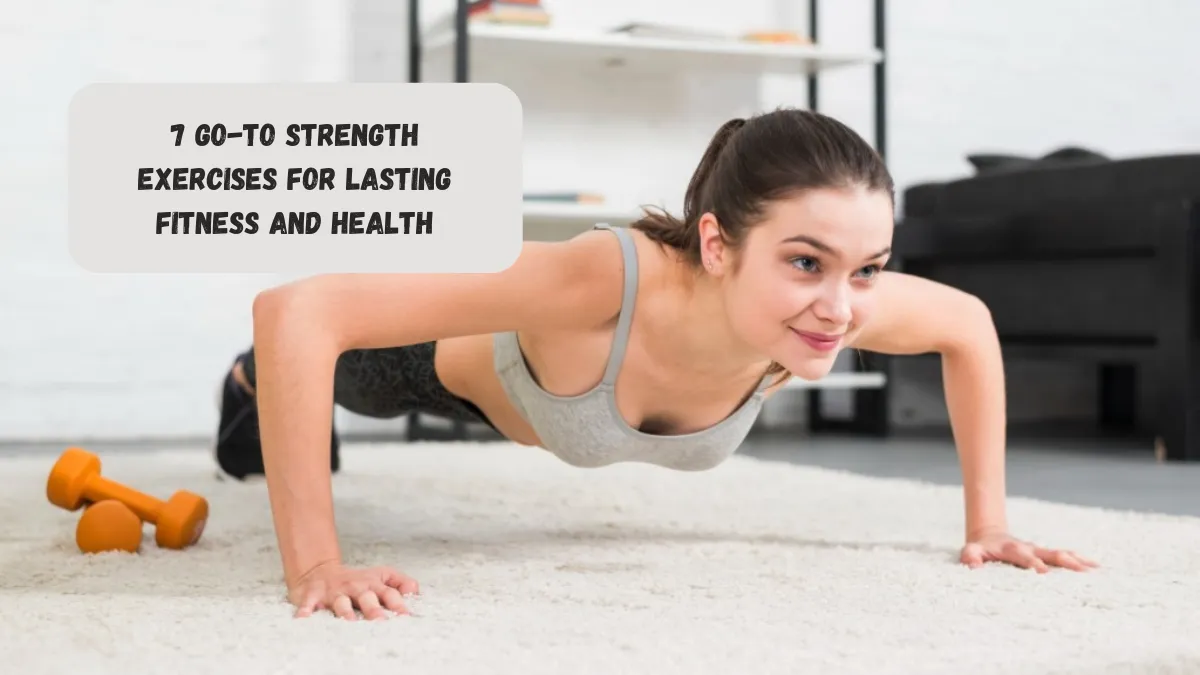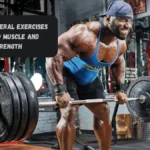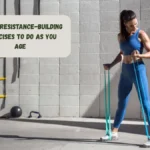Strength training for long-term health and fitness— You should put a lot of thought into your body’s long-term health and performance when you are in your 35s and 40s. Small, regular efforts can make a huge difference in keeping your strength, movement, and lean muscle mass—all of which are important for staying busy and aging well.
To achieve this, you don’t need to spend hours at the gym or follow hard practices. Concentrating on complex movements, which involve working multiple muscle groups simultaneously, can enhance your strength, improve your mobility, and maintain your lean muscle mass, all while keeping your workouts brief and effective.
These seven strength exercises will help you stay fit and useful for years to come, whether you want to carry food, play with your kids, or just move around easily.
1. Squats
Squats are one of the best ways to strengthen your lower body because they work your legs, hips, hamstrings, and core while also making you more balanced and mobile. Stand with your feet shoulder-width apart. Squat down by bending your knees and pushing your hips back. Keep your core tight and your chest up. To get back up, press through your feet.
Dr. Lisa Carter, an exercise expert, explains that squats resemble everyday activities such as sitting and standing. “They’re necessary to keep your mobility and stop muscle loss that comes with getting older.” Beginners can support themselves with a chair or do squats with just their bodies. More experienced users can add weights or a hammer to the workout to make it harder.
2. Deadlifts
Deadlifts are a fantastic way to build strength in your core, legs, hips, and lower back. This gives you a strong base for all other exercises. Hold a hammer or barbell in front of you while your feet are hip-width apart. To bring the weight down to the floor, hinge at the hips and keep your back flat and shoulders back.
To stand back up, use your hips. Deadlifts teach you how to lift safely, which is a skill you’ll use every day.” “They protect your spine and align your body better, too.” If you need to, start with smaller weights or practice the hinge motion without any extra force. As you get better, slowly add more weight.
3. Push-Ups
You can build your chest, shoulders, triceps, and core with push-ups, which are also good for your stamina. Start by doing a high plank with your hands just wider than shoulder-width apart. Bend your arms and bring your chest down to the floor. Then, push back up to the starting position.
“Push-ups are useful because they get you ready for pushing actions like opening doors or lifting things above your head. For a more challenging workout, advanced athletes can raise their feet or clap while doing push-ups. Beginners can change the way they do it by doing it on their knees or against a wall.
4. Bent-Over Rows
Bent-over rows work the muscles in your back, arms, and shoulders. They also help you stand up straight and build power in your upper body. Hold a dumbbell in each hand and stand with your feet hip-width apart. Keep your back flat and your core tight as you bend forward at the hips.
It’s important to squeeze your shoulder blades together as you pull the weights toward your chest. Then, slowly lower the weights. “A strong back protects your spine and lowers your risk of getting hurt. “It’s important to stay independent as you get older.” If you need to, use lighter weights or do sitting rows. As you get stronger, add more force or slow down the lowering part.
5. Overhead Presses
It is excellent for practical exercise because overhead presses strengthen the shoulders, keep the body stable, and work the core. Hold a dumbbell in each hand at shoulder height and stand with your feet hip-width apart. Press the weights up over your head until your arms are fully stretched out. Then, slowly bring them back down.
“Shoulder strength makes it easy to lift, carry, and reach. “They’re necessary to stay independent.” For more support, beginners can do seated presses. For more difficulty, experienced lifters can add more weight or pause at the top of the press.
6. Lunges
Lunges work your legs, glutes, and hamstrings while improving your balance, power, and agility on one side. Lower your hips and advance with one leg, bending both knees to a 90-degree angle. When you’re ready to stand up again, push through your front heel. Do the procedure again on the other side.
“Lunges fix muscle imbalances and make you more stable. They’re great for staying flexible and safe.” For extra difficulty, expert exercisers can add dumbbells or try walking lunges. Beginners can do standing lunges or hold on to a wall for support.
7. Planks
You can build core strength, steadiness, and endurance with planks, which are simple to do but very effective. Start by doing a forearm plank with your arms directly under your shoulders and your body in a straight line from your head to your feet. Hold the pose and use your core.
A strong core is the base of all movement.” “It keeps your back healthy and makes you more balanced.” If they need to, beginners can get on their knees or shorten the hold time. More experienced exercisers can make it longer or add different moves like shoulder taps or leg lifts.




